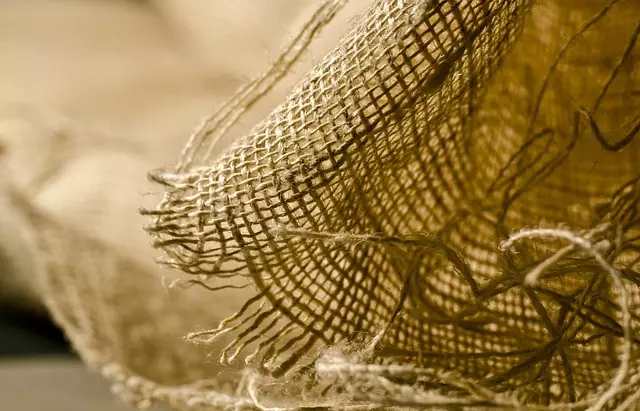Muscle soreness post-exercise, known as Delayed Onset Muscle Soreness (DOMS), is a natural response to muscle microtrauma and is part of the body's repair process. It typically appears 24 to 72 hours after intense physical activity and involves inflammation and oxidative stress. Kratom, derived from the Mitragyna speciosa tree, has emerged as a potential aid for muscle soreness, with White Maeng Da and White Bali strains being particularly notable. White Maeng Da is valued for its energy-boosting and mood-enhancing effects without sedation, which may help ease discomfort, while White Bali offers a balance of stimulation and relaxation, also providing comfort for muscles. Both strains contain high levels of mitragynine and 7-hydroxymitragynine, the compounds linked to their analgesic properties. When using kratom for muscle soreness, it's crucial to start with a low dose, monitor individual responses, and consult healthcare professionals due to variations in sensitivity and potential health considerations. The choice between White Maeng Da and White Bali should be based on personal preference and the desired balance of stimulation and pain relief. For safe and effective management of muscle soreness, these strains should be used as part of a comprehensive recovery plan that includes proper rest, hydration, and nutrition. Always verify the legal status of kratom in your area and follow usage guidelines to minimize risks.
Muscle soreness, a common experience after intense physical activity, can hinder recovery and impede progress. Exploring natural remedies for relief, this article delves into the efficacy of kratom supplements in alleviating muscle pain. We examine how Kratom’s active compounds contribute to muscle soreness relief, with a particular focus on the distinctions between White Maeng Da and White Bali strains. By comparing these potent kratom varieties, we aim to provide insights into their unique properties for muscle recovery. Additionally, this article discusses safe dosage practices and how kratom may be integrated with other therapies to optimize pain management. Join us as we navigate the intersection of botanical supplements and athletic performance.
- Understanding Muscle Soreness and Its Causes
- Kratom's Role in Muscle Soreness Relief: An Overview
- White Maeng Da vs. White Bali: Comparing Two Potent Kratom Strains for Muscle Soreness
- Dosage and Safety Considerations When Using Kratom for Sore Muscles
- Integrating Kratom with Other Therapies for Optimal Muscle Recovery and Pain Management
Understanding Muscle Soreness and Its Causes

Muscle soreness, often characterized by discomfort or pain in the muscular tissues, can arise from various activities, including intense exercise, physical labor, or even from repetitive movements over time. This phenomenon, commonly known as Delayed Onset Muscle Soreness (DOMS), typically occurs within 24 to 72 hours after unaccustomed or strenuous activities and is a natural part of the body’s repair process following microtrauma to muscle fibers. Understanding the mechanisms behind muscle soreness is crucial for effectively managing it. It involves inflammation, oxidative stress, and the activation of various signaling pathways that lead to muscle adaptation or damage if not managed properly.
In the realm of natural supplements, kratom has garnered attention for its potential role in alleviating muscle soreness. Among the many strains of kratom, White Maeng Da and White Bali are particularly notable. White Maeng Da is known for its invigorating and uplifting effects, combined with pain-relieving properties that may help soothe aching muscles. On the other hand, White Bali is recognized for its balanced stimulating and relaxing effects, which could also contribute to muscle comfort. Both strains contain alkaloids such as mitragynine and 7-hydroxymitragynine, which are thought to interact with opioid receptors in the brain, potentially modulating pain perception. Users often report that these strains, when taken responsibly, can provide relief from muscle soreness, especially when integrated into a well-rounded recovery routine that includes proper hydration, nutrition, and rest.
Kratom's Role in Muscle Soreness Relief: An Overview

Kratom, derived from the Mitragyna speciosa tree, has garnered attention for its potential role in muscle soreness relief. The alkaloids present in kratom leaves, particularly the strains known as White Maeng Da and White Bali, are believed to interact with the body’s opioid receptors, which can help in managing pain. White Maeng Da, a popular strain for its balanced alkaloid profile, is often touted for its invigorating effects without the sedative properties that some other strains exhibit. Users report that it may provide relief from muscle soreness without impairing their ability to remain active and alert. On the other hand, White Bali kratom is renowned for its fine powder and its potential to alleviate pain, including muscle aches. This strain’s effects are often described as uplifting and energizing, making it a go-to for individuals seeking relief without feeling overly tired. Both strains have distinct yet overlapping properties that make them interesting options for those looking to incorporate kratom into their muscle soreness management routine. However, it is crucial to approach the use of kratom with caution and to adhere to recommended dosages to avoid adverse effects. Additionally, individuals should consult with healthcare professionals before integrating kratom into their health regimen, especially if they are taking other medications or have pre-existing health conditions.
White Maeng Da vs. White Bali: Comparing Two Potent Kratom Strains for Muscle Soreness

When addressing muscle soreness, individuals often seek natural supplements like kratom to alleviate discomfort. Among the diverse range of kratom strains, White Maeng Da and White Bali stand out for their potent effects. White Maeng Da, known for its balanced alkaloid profile, is celebrated for its stimulating properties while offering a degree of pain relief. It’s commonly reported to provide energy without the jittery side effects often associated with caffeinated products, making it a popular choice for those looking to manage soreness during active days. On the other hand, White Bali kratom is renowned for its fine powder and consistent quality. It has a reputation for delivering a well-rounded experience, combining pain relief with a gentle stimulation that can enhance mood and focus. Users may find White Bali particularly effective for muscle soreness, as it’s often reported to have a stronger analgesic effect than White Maeng Da. Both strains are derived from the Mitragyna speciosa tree and contain the alkaloids mitragynine and 7-hydroxymitragynine, which are thought to contribute to their pain-relieving properties. When comparing White Maeng Da vs. White Bali for muscle soreness relief, it’s important to consider individual sensitivity and the desired balance of energy and pain management. Each strain offers unique benefits, and personal preference will ultimately guide the choice between these two potent kratom strains. Users should always approach kratom use responsibly, adhering to recommended dosages and considering professional advice when incorporating these supplements into a wellness regimen for muscle soreness relief.
Dosage and Safety Considerations When Using Kratom for Sore Muscles

When exploring muscle soreness relief strategies that include kratom supplements, it’s crucial to approach dosage and safety with caution. Kratom, derived from the leaves of the Mitragyna speciosa tree, is available in various strains, with White Maeng Da and White Bali being popular choices for pain management. White Maeng Da, known for its potent alkaloid content, typically requires a lower dosage to achieve the desired effect compared to other strains due to its enhanced mitragynine concentration. Conversely, White Bali is renowned for its smooth and steady energy and pain-relieving properties, which may necessitate a slightly higher dosage to be effective.
For individuals seeking relief from muscle soreness, it’s essential to start with a low dose to gauge the body’s response. A standard starting point might be around 1 to 2 grams of kratom powder for those new to its effects, with adjustments made based on personal tolerance and the severity of soreness. It’s important to note that individual sensitivity varies, and factors such as weight, metabolism, and prior experience with kratom can influence the optimal dosage. Safety considerations extend beyond dosage; it’s advisable to consult with a healthcare provider before integrating kratom into any pain management regimen, especially if you have existing health conditions or are taking other medications. Additionally, be mindful of the legal status of kratom in your region and adhere to recommended guidelines to avoid adverse effects. Monitoring the frequency of use is also prudent, as regular consumption may lead to tolerance and dependence over time. Always prioritize a holistic approach to health and well-being, combining kratom supplementation with proper rest, hydration, and nutrition to effectively manage muscle soreness.
Integrating Kratom with Other Therapies for Optimal Muscle Recovery and Pain Management

When it comes to muscle soreness relief and optimal recovery, integrating Kratom supplements with other therapeutic strategies can be highly beneficial. Kratom, a natural plant-based alkaloid, has been recognized for its potential analgesic properties, which may help in managing pain associated with muscle strain or fatigue. Among the various strains of Kratom, White Maeng Da and White Bali stand out due to their distinct effects and balancing capabilities. White Maeng Da is known for its strong stimulating effects, which can be particularly useful for those seeking pain relief without sedation. Its ability to elevate mood and increase energy levels may aid in maintaining an active lifestyle conducive to muscle recovery. On the other hand, White Bali Kratom is revered for its smooth yet potent analgesic qualities, which can provide significant relief from soreness while promoting a sense of calm and well-being.
For individuals looking to integrate Kratom into their post-exercise routine, it’s important to consider dosage and timing to complement other recovery methods such as stretching, massage therapy, or physical rehabilitation exercises. The synergistic effect of Kratom with these therapies can enhance the body’s natural healing processes. For instance, after an intense workout, White Maeng Da can help manage post-exercise pain while providing the necessary energy for subsequent activities. Conversely, White Bali can be particularly soothing for muscles that are overworked or experiencing discomfort, potentially improving overall recovery times and readiness for the next training session. As with any supplement regimen, it’s crucial to consult with a healthcare professional to determine the best approach tailored to individual needs and circumstances.
Muscle soreness can be a significant hindrance to an active lifestyle, often resulting from intense physical activity or injury. Exploring natural remedies like kratom supplements has garnered attention for those seeking relief without relying solely on pharmaceuticals. This article delved into the mechanisms of muscle soreness and how kratom, particularly strains such as White Maeng Da and White Bali, may offer effective relief. Comparing these strains highlighted their distinct properties, with both demonstrating potential in alleviating discomfort. It is imperative to approach kratom use with careful dosage and safety considerations to optimize its benefits for muscle recovery and pain management. By integrating kratom with other therapies, individuals can tailor a holistic approach to their muscle soreness needs. In conclusion, while kratom holds promise for muscle soreness relief, it is essential to adhere to responsible usage and consult healthcare professionals for guidance on incorporating these supplements into one’s wellness regimen.






